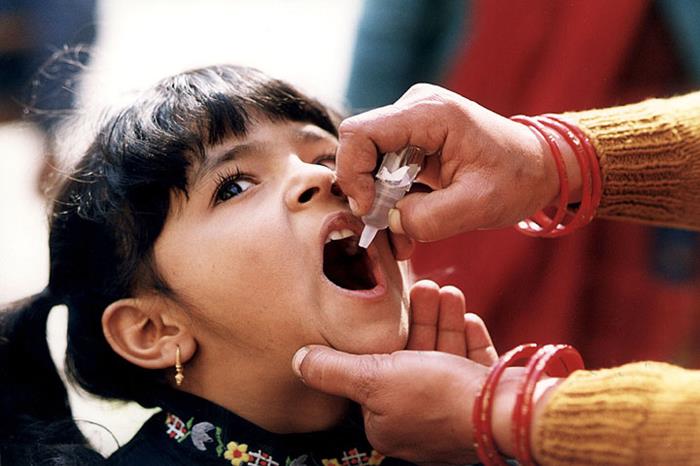Oral poliovirus vaccine withdrawal reduces prevalence of serotype 2 strains
Click Here to Manage Email Alerts
Serotype 2 poliovirus disappeared rapidly after the worldwide removal of a vaccine containing that particular strain, and serotype 2 vaccine-derived poliovirus has been limited to areas at high risk for transmission, according to research published in The New England Journal of Medicine.
Isobel M. Blake, PhD, a research fellow in Imperial College London’s department of infectious disease epidemiology, and colleagues wrote that as the world inches closer to complete polio eradication, efforts have been underway to withdraw the oral poliovirus vaccine (OPV) to avoid outbreaks of vaccine-derived poliovirus (VDPV). The first step, they said, was to remove serotype 2 OPV (OPV2). The last naturally occurring case of serotype 2 wild poliovirus was contracted in India in 1999, and in the past 10 years, more than 90% of VDPV poliomyelitis cases were a result of VDPV with serotype 2 (VDPV2), they said.
In 2016, WHO orchestrated a globally synchronized withdrawal of the trivalent OPV containing the serotype 2 strain and replaced it with a bivalent OPV containing serotypes 1 and 3.
“A major risk associated with OPV2 withdrawal is the occurrence of further outbreaks of circulating VDPV2 that result from continued circulation of VDPV2 caused by the use of trivalent OPV before OPV2 withdrawal or by the accidental use of trivalent OPV after withdrawal of OPV2,” the researchers wrote. “The risk of an outbreak is likely to be highest during the first 12 months after OPV2 withdrawal. However, if VDPV2 circulates after 12 months, the scale of an outbreak will most likely be greater owing to the accumulation of children who have not been immunized against serotype 2.”

Blake and colleagues examined data on serotype 2 Sabin vaccine (Sabin-2) poliovirus and VDPV2 based on stool samples provided by children with acute flaccid paralysis in 118 countries between Jan. 1, 2013, and July 11, 2018. Additional sewage samples were collected from countries where there is a high risk for transmission of poliovirus.
The researchers observed a decrease in the prevalence of Sabin-2 poliovirus in the 495,035 stool samples taken during the study — 3.9% (95% CI, 3.5%-4.3%) when OPV2 was withdrawn to 0.2% (95% CI, 0.1%-2.7%) 2 months after its withdrawal. They also observed a significant decrease (71% to 13%) in the additional 8,528 sewage samples from high-risk countries.
Despite a decrease in Sabin-2 poliovirus following OPV2 withdrawal, Blake and colleagues said that the virus could still be detected in stool samples (<0.1%; 95% CI, <0.1% to 0.1%) and in sewage samples (8.0%; 95% CI, 5%-13%) 12 months later. They said that this was a result of the use of OPV2 during VDPV2 outbreaks.
Low rates of routine immunizations and low levels of herd immunity led to nine outbreaks of poliovirus following OPV2 withdrawal, according to the researchers.
“In 2017, the number of poliomyelitis cases associated with circulating VDPV2 — 96 cases — exceeded those caused by wild poliovirus — 22 cases — for the first time, and outbreak-response campaigns with monovalent OPV2 are continuing in several countries,” Blake and colleagues wrote. “Timely control of these outbreaks in the context of a growing cohort of children who do not have immunity to type 2 poliovirus is critical to the success of polio eradication.” – by Katherine Bortz
Disclosures: Blake reports receiving grants from the Bill and Melinda Gates Foundation and WHO. Please see the study for all other authors’ relevant financial disclosures.
